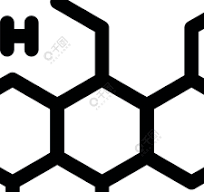Urokinase
Function:
This product is mainly used for thrombolytic treatment of thromboembolic diseases. Including acute extensive pulmonary embolism, coronary embolism and myocardial infarction within 6 to 12 hours of chest pain, acute cerebral vascular embolism with symptoms lasting less than 3 to 6 hours, retinal artery embolism and other peripheral arterial embolism with severe symptoms of iliac-femoral vein People with thrombosis. It is also used to prevent thrombosis after artificial heart valve surgery, and to maintain the smoothness of vascular intubation and chest and pericardial cavity drainage tubes. The efficacy of thrombolysis requires subsequent heparin anticoagulation to maintain it.
Dosage:
This product should be prepared with sterile physiological saline for injection or 5% glucose solution before use. The initial dose for pulmonary embolism is 4,400 units/kg of body weight, prepared with 0.9% sodium chloride solution or 5% glucose solution, and dripped within 10 minutes at a rate of 90 ml/hour; thereafter, the dose is 4,400 units per hour. Continuous intravenous infusion for 2 hours or 12 hours. In case of pulmonary embolism, 15,000 units per kilogram of body weight can also be prepared with 0.9% sodium chloride solution and then injected into the pulmonary artery; if necessary, the dose can be adjusted according to the situation, repeated every 24 hours, and used up to three times. For myocardial infarction, it is recommended to prepare a 0.9% sodium chloride solution and infuse it continuously into the coronary artery at a rate of 6000 units/min for 2 hours. Before the infusion, 2500-10000 units of heparin should be given intravenously. You can also prepare 2 million to 3 million units of this product for intravenous infusion, and finish the drip in 45 to 90 minutes. For peripheral arterial thrombosis, prepare this product with 0.9% sodium chloride solution (concentration 2500 units/ml) and inject the blood clot through the catheter at a speed of 4000 units/min. Clamp the catheter once every 2 hours; the instillation speed can be adjusted to 1000 units/min until the blood clot is dissolved. Preventing and Treating Thrombosis After Heart Valve Replacement Thrombosis is one of the most common complications after heart valve surgery. This product can be prepared according to the body weight of 4400 units/kg and 0.9% sodium chloride solution and dripped in 10 to 15 minutes. Then maintain it by intravenous infusion at a rate of 4400 units/kg of body weight every hour. Stop the medication when the valve function is normal; if the medication is still ineffective after 24 hours or severe bleeding occurs, the medication should be discontinued. Empyema or pericardium is usually treated with antibiotics and drainage of the pus. Drainage tubes often become blocked due to fibrin clot formation. At this time, 10,000 units to 250,000 units of this product (concentration 5,000 units/ml) prepared with sterile water for injection can be injected into the chest or pericardial cavity. It can not only keep the drainage tube open, but also prevent pleural or pericardial adhesions or pericardial constriction. Ophthalmic applications are used to dissolve hyphema clots caused by intraocular bleeding. Disintegrate the blood clot and facilitate surgical removal. The usual dosage is 5000 units, prepared with 2 ml of 0.9% sodium chloride solution to flush the anterior chamber. The same medicines produced by different manufacturers may have inconsistent instructions. If you find any inconsistency in the instructions before taking the medicine, please consult your doctor or pharmacist in time.
Drug contraindications:
If you are allergic to this product, please do not use it during breastfeeding.
Related dosage forms:
injection
Share:
Products
Our offers
Health Classification
Let us work together to protect precious health






























